Today was an afternoon trip with L and some of his business associates (tea people from Zhongcha). I first went to the store where L has a stake in at Maliandao. It’s in a new mall there that opened recently, and I finally found the Haiwan factory store. I need to go there next time to check that out and try the Meng Pasha cake that BBB likes so much. I also found a store that only sells Chamasi stuff, that I want to try as well.
At the store, we tasted many of the same things that we tried two days ago, as L and his associates were deciding what to order for stock. We also tried some Menghai stuff. I brought my Mengku along as a comparison with the one we had at Zhongcha’s office. It’s really quite similar. It has a little less age, since it was from 2002, but the profile is remarkably similar… and mine’s about 1/5 of the price of that piece of tea from Zhongcha. I can’t say I’m not happy about that.
I also brought the Yiwu maocha that I like… but something’s not quite right. It seems like the aging is doing something to the tea, and the taste is changing. I need to try it again myself in my own home, with me brewing it, and see if it’s the brewer doing things to the tea, or if it’s actually changing on me. I am losing that wonderfully fragrant and sweet maocha taste that so impressed me. I hope it doesn’t disappear as it turns to aging…. or whatever it’s turning into.
We ended our tastings here with, oddly enough, a tieguanyin… a super light fired tieguanyin that is what they call “qingxiang” in Beijing. When I asked the girl brewing the teas if she knew of a place that sells nongxiang (heavy fire) she said yeah, and then showed me a bag of stuff that I would also consider qingxiang…. basically, to them, stuff that is made with more traditional craft is “nongxiang” while I think a newer method, which results in a rather grassy and IMO disgusting tieguanyin, is what they call qingxiang. The leaves are unbelievably green, and the taste thin and grassy…. I had two cups and stopped.
After that we had dinner, and then went to Tenfu, where there was, basically, a graduation ceremony for a tea class at their Luyu Tea Center, where they hold classes. This is also where they developed their “Luyu Small Pot Method”, which, from what I can tell, is pretty similar to anybody else’s gongfu brewing, except with great attention to things like
1) keeping the brewing surface dry at all times with their proprietary tea desk (which is only slightly different from the usual ones)
2) using a TIMER!!!!!
3) …. that’s about it
I can’t seem to notice anything particularly exciting or new about it, other than their slightly modified proprietary desk which I’m sure costs an arm and a leg. Basically, instead of a screen with a water-capturing device underneath, so you can pour to your heart’s content, it’s replaced with a solid wood surface with a hole where the water goes. This means that if you don’t wipe the surface, water stays, so you have to constantly wipe the water off …. which I find rather silly.
There’s also not a whole lot of attention paid to the way the water’s poured into the tea. It’s done in a slightly haphazard manner, from what I can tell. Boo. The use of the timer’s just the last straw. I’m sure it helps beginners, I suppose, but when I took my first course from Best Tea House (before I realizing that such lessons are generally a waste of money) it was made plenty clear that times are only suggested, and should vary depending on the individual tea, amount of leaves you put in, personal taste, etc. Using a timer, IMHO, encourages a more rigid and scientific way to brew tea, but ultimately takes away the art of tea making which in my opinion is an essential part of the experience of brewing tea. After a while, you get an idea of about how long to use for each infusion anyway. It shouldn’t take a timer for someone with a few months, or even a few years’ of experience.
But of course, they should be applauded for bringing this sort of tea making and culture to people in China, and for that, Tenfu is very successful. Their presence makes it easier for people to approach the world of fine teas. Otherwise, many more Beijingers are going to be drinking jasmine tea only.
Anyway… I digress.
So while the students who are graduating today have this nice little gathering, with calligraphy, music, art, and tea making ceremonies (those little artsily set up stalls… each done up by the student and with them brewing tea), those of us who came with L just went upstairs to take a look. Some of them know many in the crowd, and stayed for the most part, while people like me who don’t know anybody in this group (or think it’s too many people, which it was) left quickly and went back downstairs into a more private room to brew more tea.
One of the guys from Zhongcha, as I mentioned two days ago, is a taster of sorts for them. He is also responsible for developing their puerhs. Let’s call him ZH. ZH was well prepared today — he joined us during dinner, and came with a whole bagload of tea. We ended up drinking mostly stuff from him for the rest of the night.
First up was a Mingqian Longjing. Supposedly, this tea came from a once-abandoned field of tea trees in Meijiawu area of Hangzhou, one of the more famous Longjing producing locales. Anyway, the brewing was a little… weak, thanks to a slightly low leaf-to-water ratio. However, you can tell that this was a nicely aromatic, smooth, and slightly different Mingqian Longjing than the usual. Its aroma is not quite the “bean” aroma that we normally ascribe to Longjing…. there’s a slight twist to it, and I am at a loss for words to describe that subtle difference.
We then drank a cooked puerh from Tenfu, supposedly from the Nannuo area. ZH said he can tell it’s from the Menghai area, but since it’s cooked puerh…. it’s extremely difficult to tell exactly where it’s from. To me, it all tastes about the same, and I don’t really have much of an interest to figure it out any further… suffice to say it was not bad, smooth, without too many of the nasty flavours you sometimes find in cooked puerh, but expensive. For the price I can buy a very nice Yiwu cake.
Then, we drank a very nice tea — a real Lao Banzhang maocha that ZH has, a spring tea. It’s sort of the only thing that’s truly picture worthy today
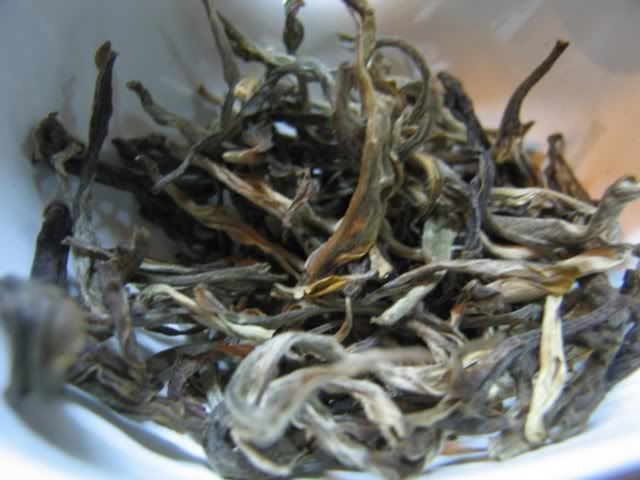
The leaves don’t look overly big in the dried form — very thoroughly rolled. You can smell the Banzhang even when it’s dry. The tea is very smooth, nice body, full flavoured like a Banzhang usually is — but far less bitter than your usual Banzhang tea. A good “throat feel”, but really, the tea goes down nicely, never being too bitter, as some Banzhang tend to be. There’s a sort of subtleness to the tea that you only find in higher quality maocha, and this is no exception. Even when overbrewed with long infusions…. it’s still not terribly bitter, and most improtantly, the huigan speed is very fast — meaning that the transition from bitterness to the resulting sweetness is extremely fast, which I think is why we don’t feel it’s very bitter. This is something that lower quality teas, and plantation teas, do not have…

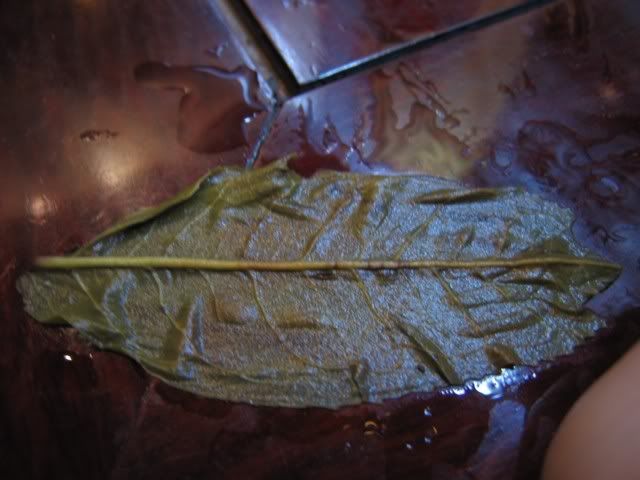
The leaf colour, when brewed, is very nice, with little evidence of redness. The single leaf is about 4cm long, I think, just to give you an idea. This will age really well, methinks, and best of all, ZH gave me the rest of his sample, enough for another brewing and half 🙂 🙂
After the Banzhang, we had a curiosity piece — he first didn’t tell us what it was. He opened a bag, which was vacuum sealed, and took out two mini-tuos that are about 2-3g each. He threw it
in the gaiwan, brewed it…. and it’s….. sweet. Really, really sweet, but with a tangy slant to it, sort of a citrus like taste/smell. The liquor is a nice orangy/red colour. I thought it could be puerh at first, but the taste told me no with the citrus smell. We made our guesses. Mine was either a puerh that was wrapped in a mandarin and aged a bit, or older teas of some sort, maybe a red tea that was placed together with chenpi, which are dried mandarin skins. No, ZH said — it’s just the tea, and this is the original seal that he just broke.
Turns out it’s a Yunnan red tea made for export, but somehow kept in its original seal all these years (something like 10 years old). The taste in the tea developed over time…. and I have to say while it’s not the greatest thing, it’s definitely a very, very curious thing. Something I’ve never quite tasted. It was odd, and it was fun.
Which reminds me that I still have a weird tea that I haven’t tasted since I bought it.
We ended the night with one more tea from ZH — a mini brick from Menghai, 1995, supposedly. It’s wet stored, or at least it got pretty damp at one stage of its storage. Some whiteness on the surface of the brick, and the taste is quite similar to the “home stored” loose puerh that I bought from the Best Tea House… except this is probably more expensive. He said this is what he liked two years ago, but now, he prefers the young Banzhang. Interesting. I think it’s just a wet stored tea that has gotten rid of most of the nastiness of wet storage taste, and thus produces a black, sweet, pleasant tea that most recognize as puerh. To the uninitiated, they might even think cooked.
That concluded the night, and I think I will be inviting ZH over for tea in a day or two. He did, after all, pull out a few good things, and you can sort of tell that he is actually interested and loves drinking tea in all its various guises. Also, he’s not trying to sell anything. He will be going down to Yunnan next spring again to press cakes for their company, and maybe, just maybe, I can tag along. That will be awesome.
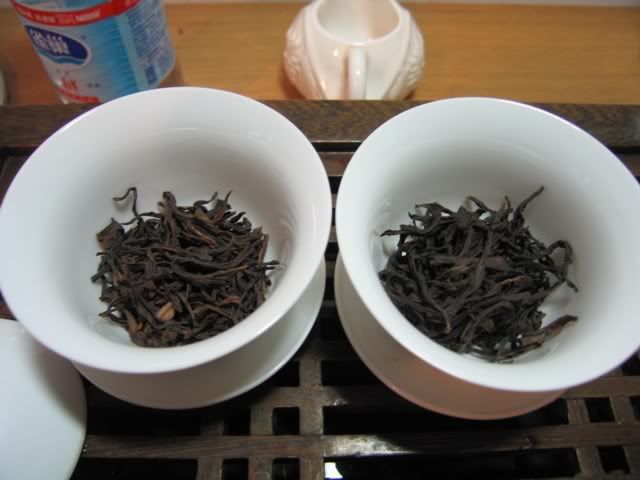
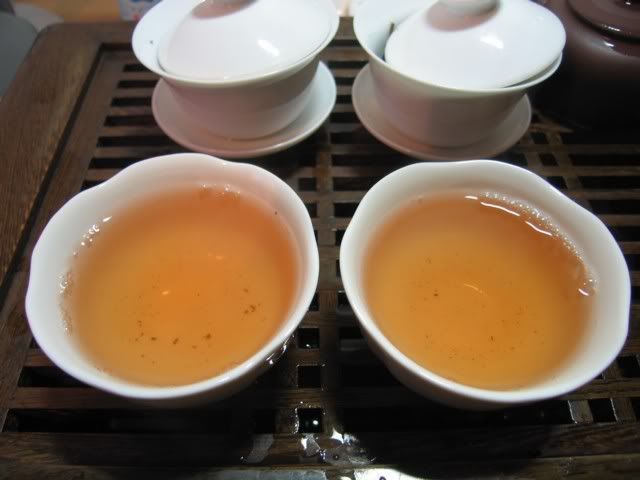
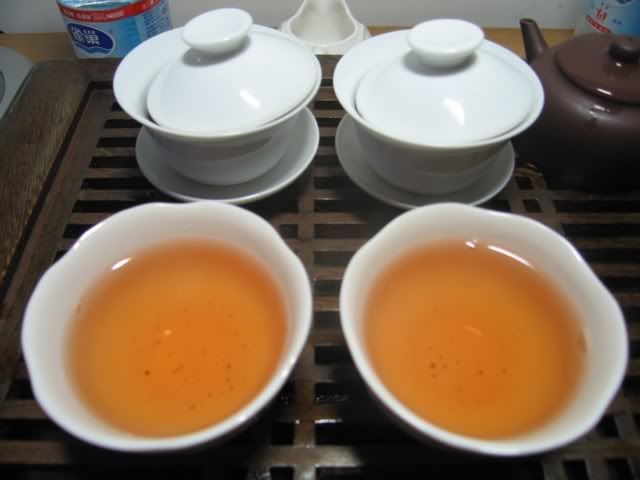
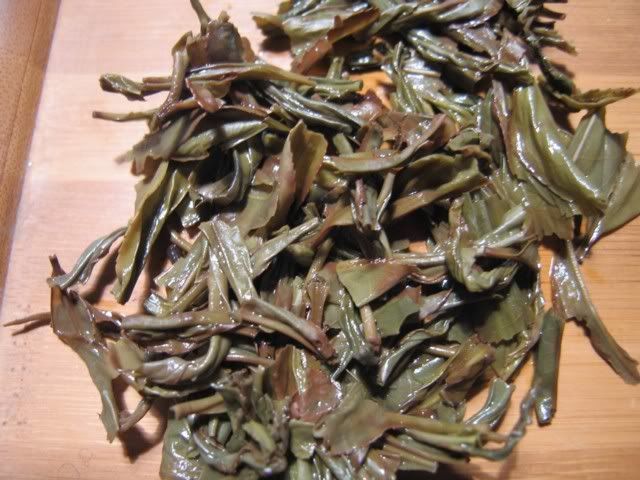






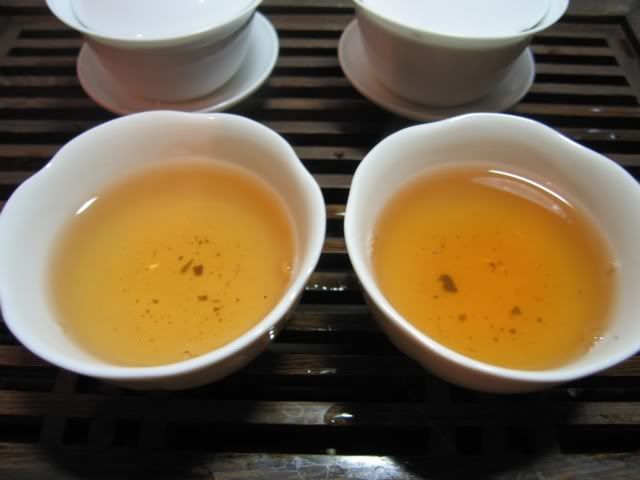
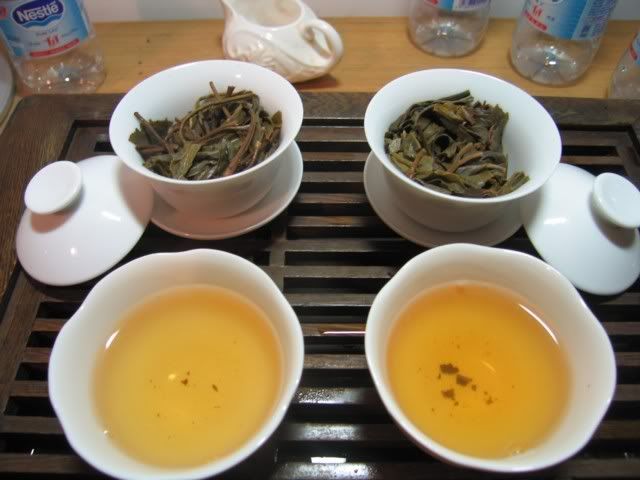

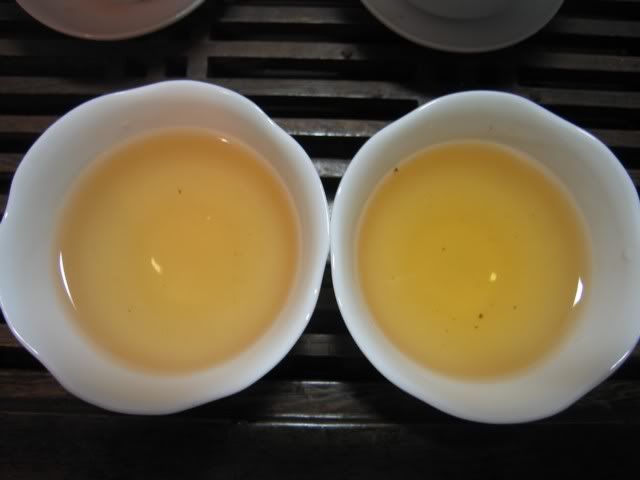

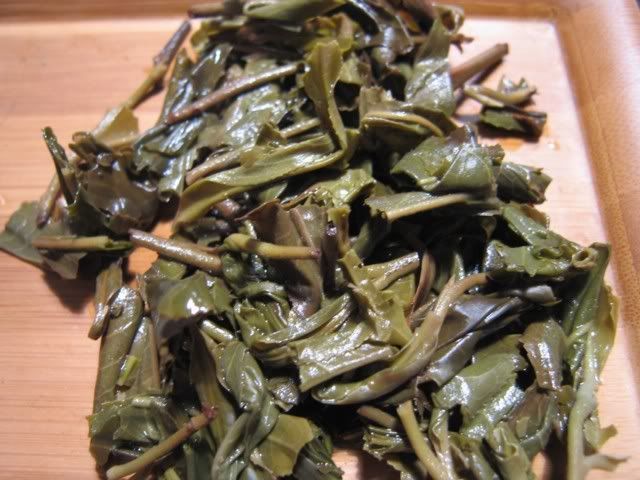
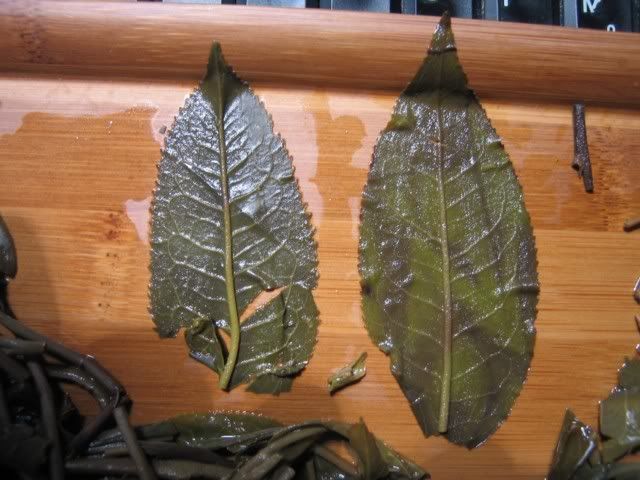


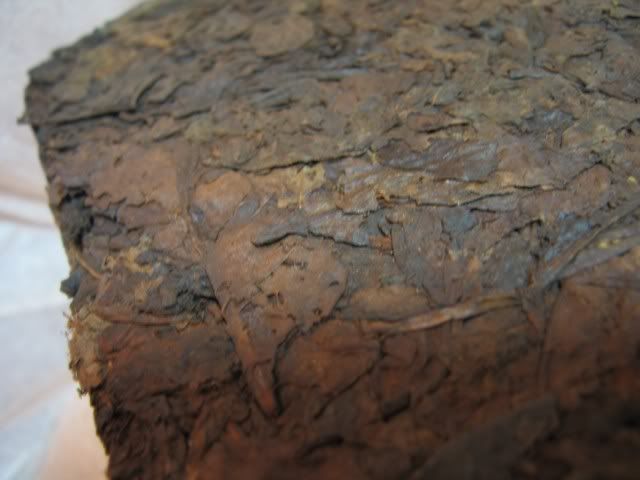
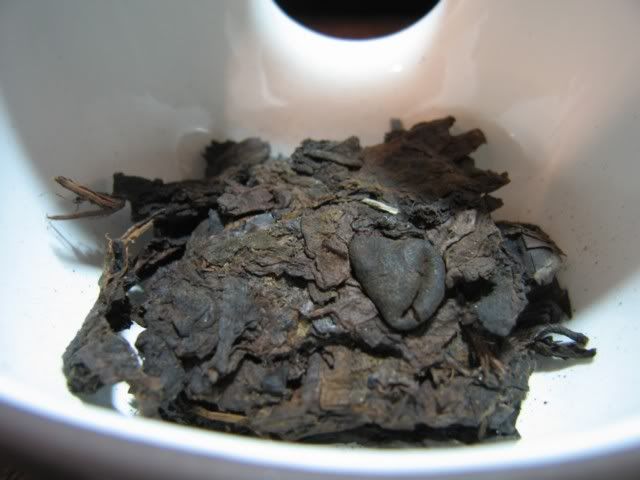
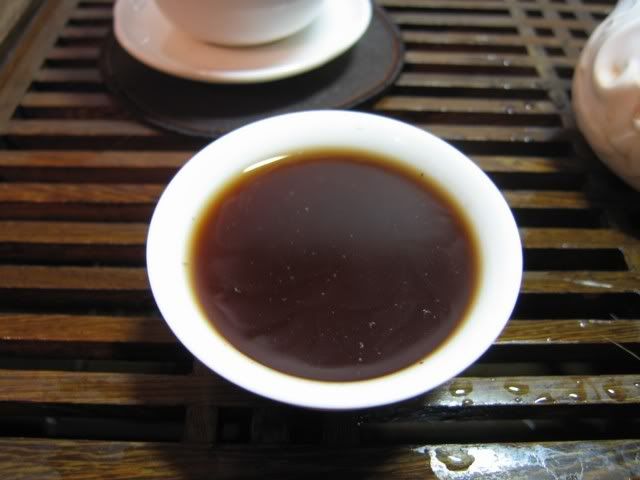
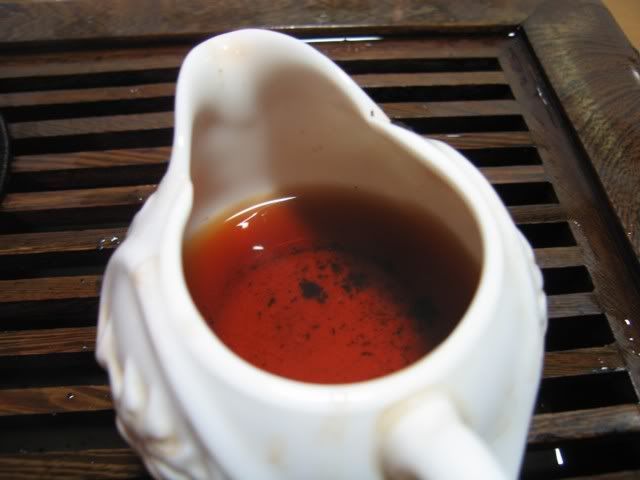

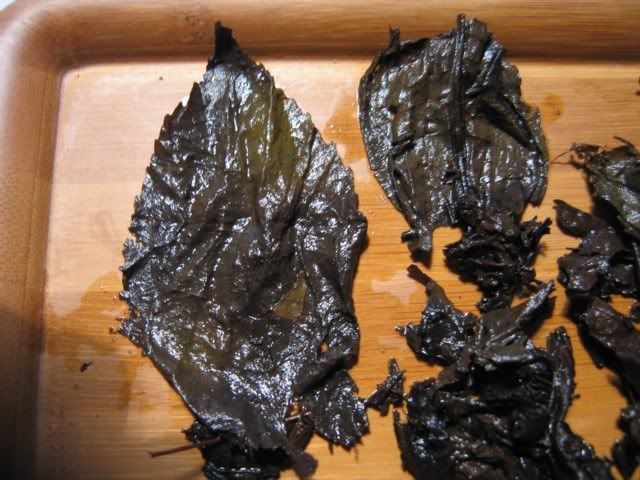

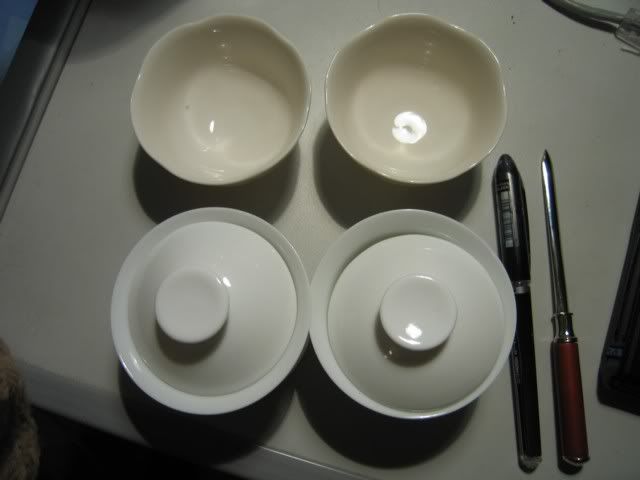

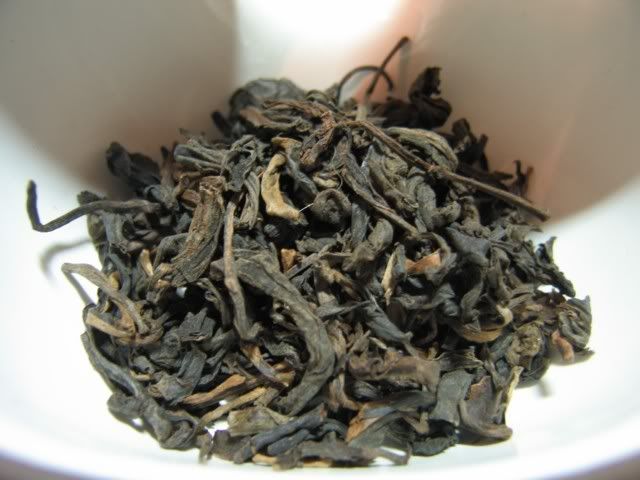
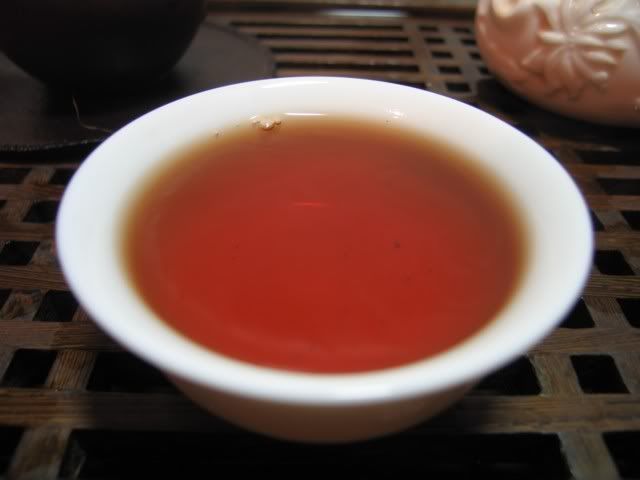
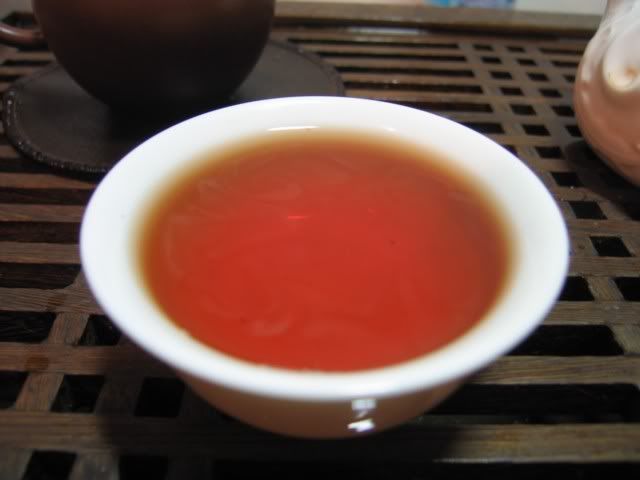
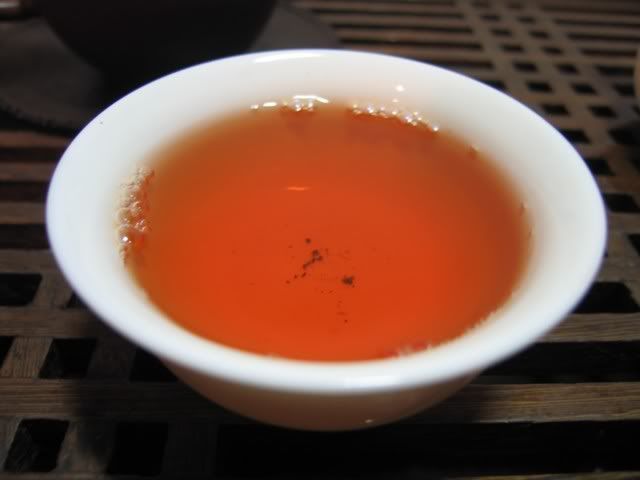
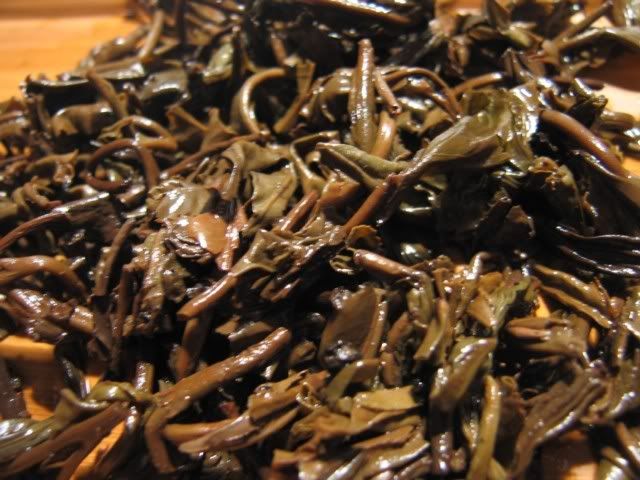
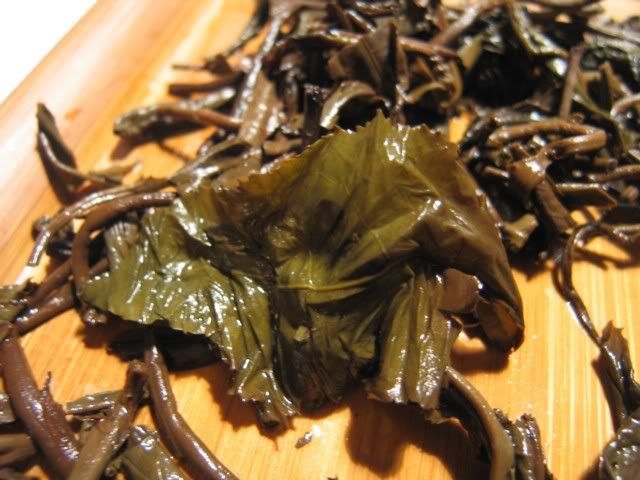
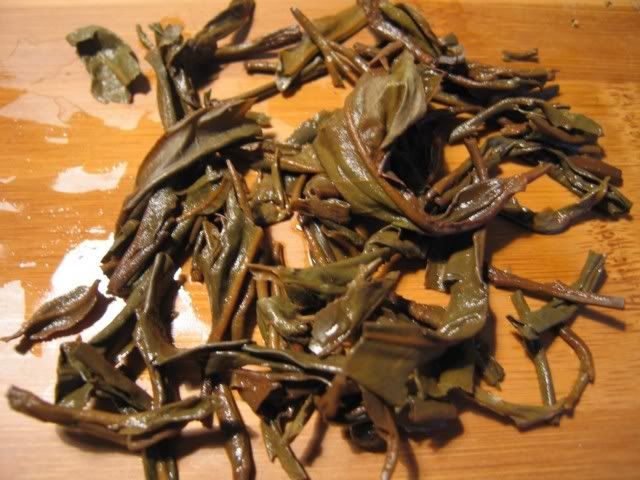
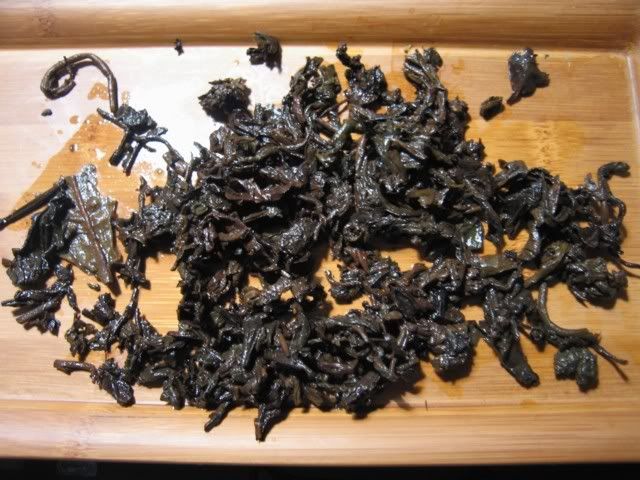
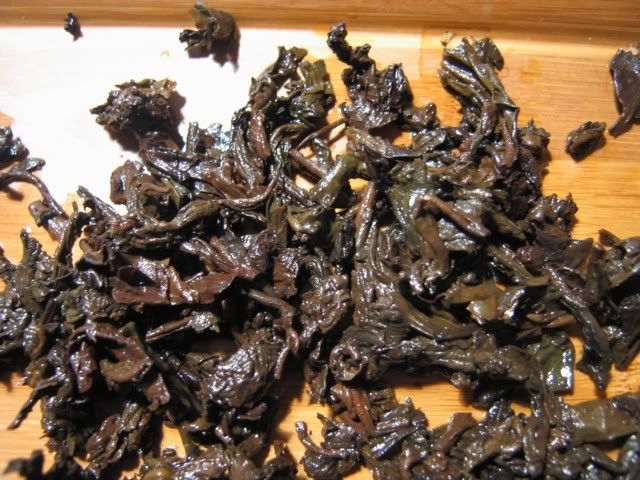



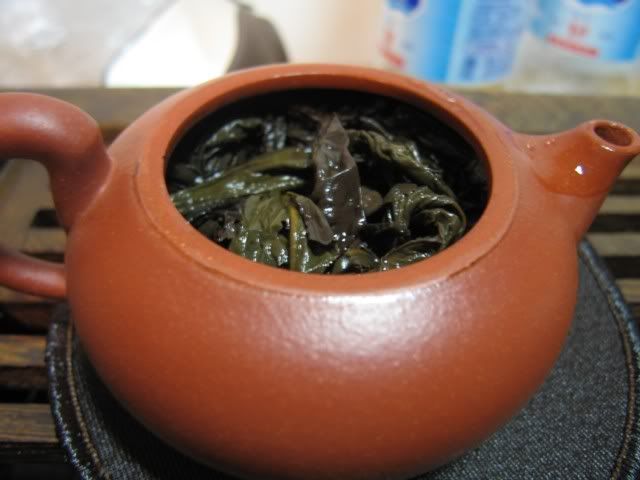






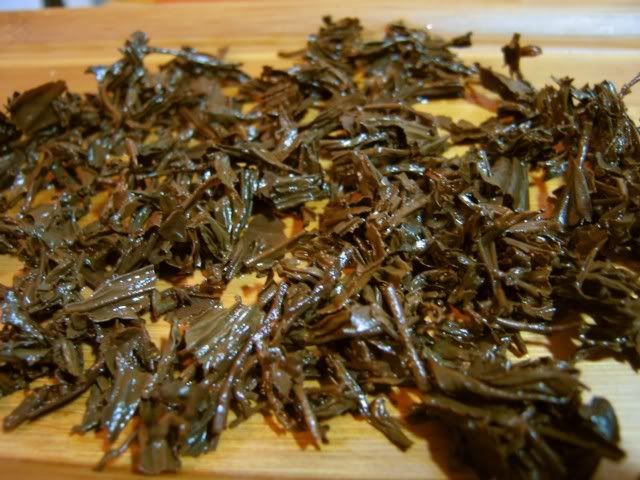
I just want to say that I still find your blog and writing extremely relevant. Thanks!